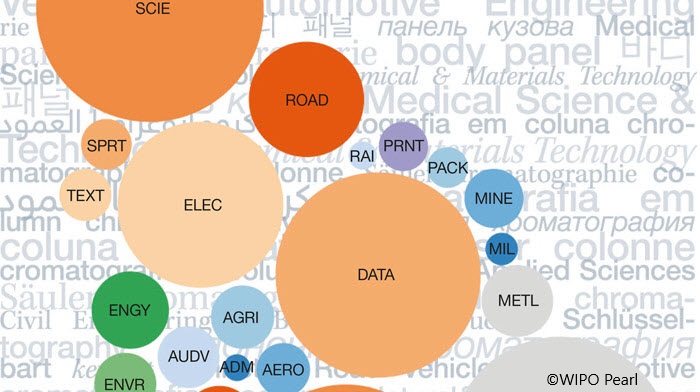
This year, FIT held its second webinar to celebrate International Translation Day (ITD). It was our most successful webinar yet, with over 850 registrations, thanks in part to the amazing speakers who agreed to participate. As attendees asked many more questions than we were able to answer, we thought we would ask each of the panellists to respond here in Translatio. First up, Cristina Valentini, Head of Terminology Unit at the World Intellectual Property Organization (WIPO), agreed to talk with me.
Alison Rodriguez: Hi Cristina, thanks for being part of our ITD webinar panel. It was a dynamic discussion with broad perspectives, and we had excellent feedback.
Cristina Valentini: Thanks for inviting me, a very passionate webinar indeed.
AR: Let’s jump right into the audience questions from the chat. First, how are AI tools used in terminology work?
CV: The potential of AI tools is yet to be fully explored in the field of terminology management, so it is important that we embrace them.
Modern AI tools significantly enhance terminology work by improving efficiency and offering new capabilities. At WIPO, early adoption of AI, particularly neural machine translation (NMT), has shown its value in generating multilingual equivalents. For instance, WIPO Pearl, WIPO’s terminology portal, offers the option to see human-validated terms alongside machine-translated equivalents generated using WIPO Translate, our internally developed machine translation engine.
The quality of NMT significantly increases if: 1. The training data is of a high quality, i.e., the texts on which the NMT model is trained are translated by humans, and 2. Models are trained with domain-specific data, i.e., texts that can be assigned to a specific field of knowledge.
Supervised learning also aids terminology work, such as expanding WIPO Pearl’s concept maps, which visualise relationships between concepts in specific subject fields. Since 2017, WIPO’s ‘concept clouds’ feature displays relationships between concepts suggested by a supervised machine learning algorithm trained on the corpus of human-validated contexts and relationships existing in WIPO Pearl.
Additionally, new generative AI tools based on large language models (LLMs) show potential for key tasks like term extraction, meaning disambiguation, and checking of synonymy. While promising, use of these tools is still experimental, and their advantages compared to human-built corpora and term extractors haven’t yet been studied in detail.
AR: How can terminology help translators stay competitive, and is it helpful for using AI tools?
CV: In today’s era of automation, I believe translators who engage with terminology learn vital skills. Understanding terminology principles is useful, and I would say even critical, for effective training and use of new AI technologies, especially generative AI.
Terminology training equips translators with key skills: it deepens their knowledge of linguistics, particularly semantics and morphology; enhances their ability to draw meaningful conclusions from the observation of data – vital for effectively interacting with AI via prompts; and reinforces their ability to navigate the ocean of information we’re exposed to and distinguish reliable from unreliable sources.
Terminology, by its nature, contrasts with generative AI. Terminology involves studying, collecting and organising terms for consistent use by humans and machines. Terminology documents the usage of terms in authentic texts and authoritative sources to find the best term for a given concept in a specific language. Terminologists, like journalists or historians, always need to rigorously verify their sources.
In contrast, LLM-based tools are good at gathering and presenting information but often lack transparency in their logic, reasoning and evidence. Unlike generative AI’s short-lived, non-repeatable answers, terminology work aims to create documented, reliable, and long-lasting resources.
AR: What role does WIPO play in terminology education and skills development?
CV: WIPO has various initiatives to promote the dissemination of terminology knowledge and skills. It provides continuous terminology training for its translation staff and offers an in-house fellowship programme for recent MA graduates. This programme is open to applicants worldwide, with applications opening annually in January. WIPO collaborates with universities worldwide to promote and teach terminology theory and intellectual property, including in languages and cultures where terminology is not traditionally taught. For example, students can collaborate and complete master’s dissertations or project assignments as part of specialised translation or translation technology courses, with access to a self-study online course and professional feedback. High-quality terms are published in WIPO Pearl, crediting the university.
Additionally, WIPO contributes to terminology standardisation through ISO/TC 37 and, as you will know, has an MoU with FIT as part of a joint commitment to promote knowledge of terminology. As testimony to our ongoing partnership, WIPO will host the XXIII FIT World Congress in September 2025, and we’re looking forward very much to meeting everyone there.
AR: Thanks for your time, Cristina. See you at FIT Congress in Geneva next year!
—
For more info on the XXIII FIT World Congress, visit www.fit2025.org
Universities who are interested in a collaboration can contact WIPO at: wipopearl@wipo.int.
Alison Rodriguez, FIT President
